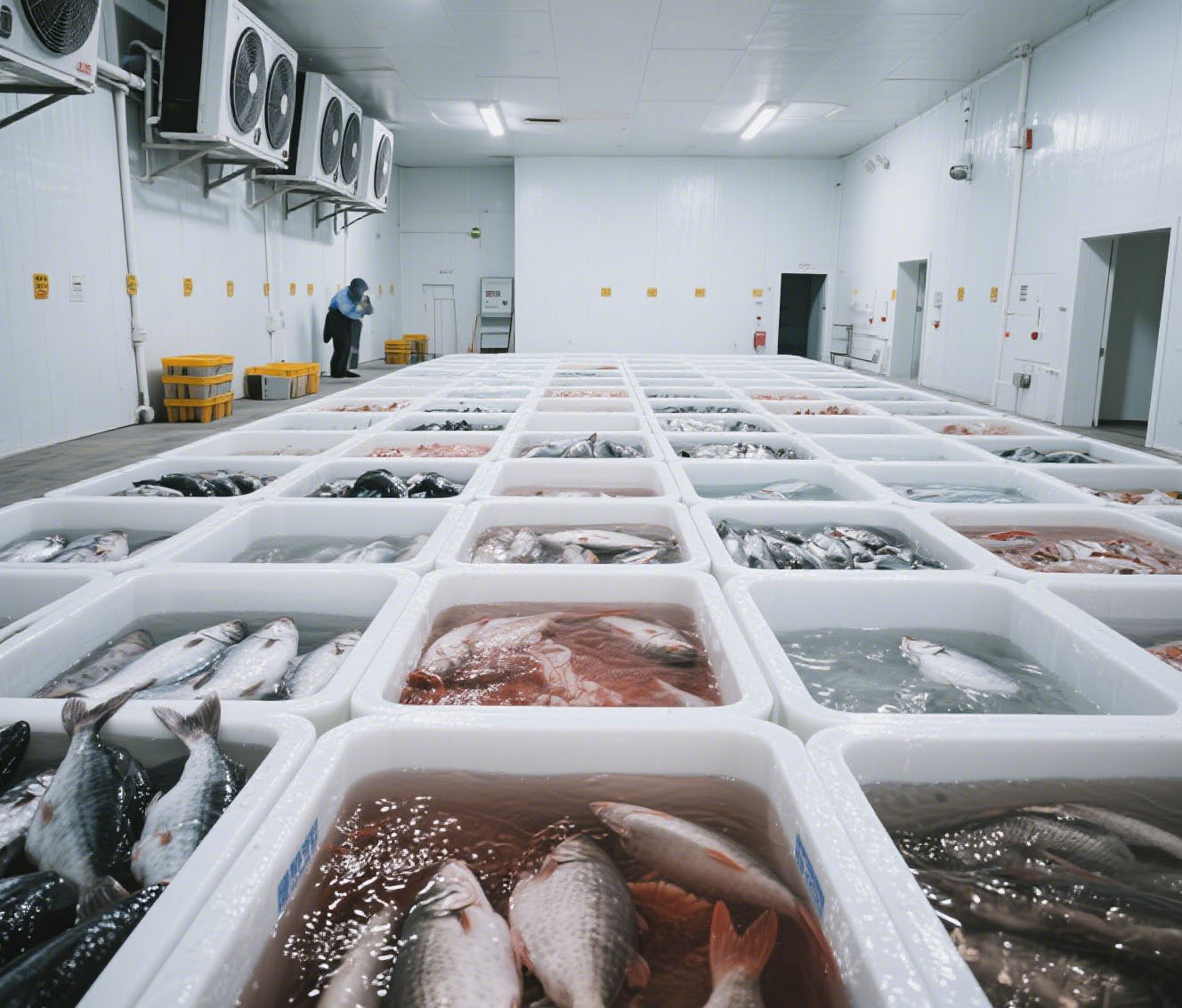1. Quality Risks and the Role of Temp/Humidity Control
Chilled seafood stored below 85 % RH experiences rapid surface moisture loss, leading to “cold-wind burn” or freezer burn, texture hardening, and 2 %–4 % weight loss Linble Coldroom. Excessive humidity (> 95 % RH) in refrigerated units promotes frost accumulation on coils and equipment, increasing defrost frequency and energy consumption FAOHome. In frozen storage (≤ –18 °C), uncontrolled moisture condenses into ice crystals that damage both product tissue and packaging integrity College of Agricultural SciencesPerennia.
2. Recommended Temperature & Humidity Ranges
Chilled Seafood (0 °C to 4 °C): Maintain 85 %–90 % RH to reduce dehydration while inhibiting microbial growth Cold Chain Packing & Logistics.
Frozen Products (≤ –18 °C): Target 50 %–60 % RH to balance frost prevention with moisture retention in general freezers College of Agricultural SciencesLinble Coldroom.
IQF Freezers (–30 °C to –40 °C): Control at 40 %–50 % RH to enable rapid freezing and minimize cellular rupture PerenniaLinble Coldroom.
Ultra-Low Temp (–45 °C to –60 °C): Maintain < 30 % RH for frost-free operation and to prevent sample adhesion PerenniaLinble Coldroom.

3. Technologies & Equipment for Control
Real-Time Monitoring: Deploy temperature/humidity sensors with ± 2 % RH accuracy and 1–5 min sampling; integrate with alarms for deviations Sensitech.
Automated Humidification/Dehumidification: Use condensing dehumidifiers and steam or ultrasonic humidifiers in the HVAC loop to adjust RH seamlessly based on sensor feedback Industrial Cold Room & Equipments.
Optimized Airflow Design: Implement multi-point supply and return air ducts and maintain a ≤ 5 °C delta between evaporator and room temperature to achieve 85 %–90 % RH in chilled rooms FAOHome.
Defrost Strategies: Combine intermittent hot-gas bypass or electric defrost cycles with dry-air circulation to prevent evaporator frost without large humidity swings College of Agricultural Sciences哈博冷链.
4. Best Practices Across Loading, Transit & Unloading
Pre-Cooling: Rapidly reduce product core temperature to target range in a specialized pre-cooler to avoid introducing moisture into the transport unit College of Agricultural Sciences.
Door Control: Use fast-roll doors and air curtains to limit exposure; restrict door openings to under 3 minutes to prevent humidity and temperature shocks FAOHome.
Moisture-Barrier Packaging: Employ high-barrier films (metalized PET, aluminum laminates) and ice-glazing for seafood to minimize in-package moisture loss and drip Feeding San Diego哈博冷链.
In-Transit Controls: Monitor conditions continuously via data loggers or IoT devices; adjust HVAC setpoints remotely when excursions occur Xsense.
Post-Transit Inspection: Upon arrival, verify temperature and RH logs, inspect product for signs of dehydration or condensation, and rotate stock according to FIFO/FEFO principles.
5. Summary of Key Measures
Adhere to 0 °C–4 °C/85 %–90 % RH for chilled seafood and ≤ –18 °C with RH per freezer type.
Integrate ± 2 % RH sensors and 1–5 min sampling with automated humidifiers/dehumidifiers.
Optimize airflow and defrost cycles to maintain frost-free, uniform conditions.
Implement rapid pre-cooling, door management, and moisture-barrier packaging.
Employ real-time monitoring and data-driven interventions throughout transit.


 Return to List
Return to List
 Phone
Phone